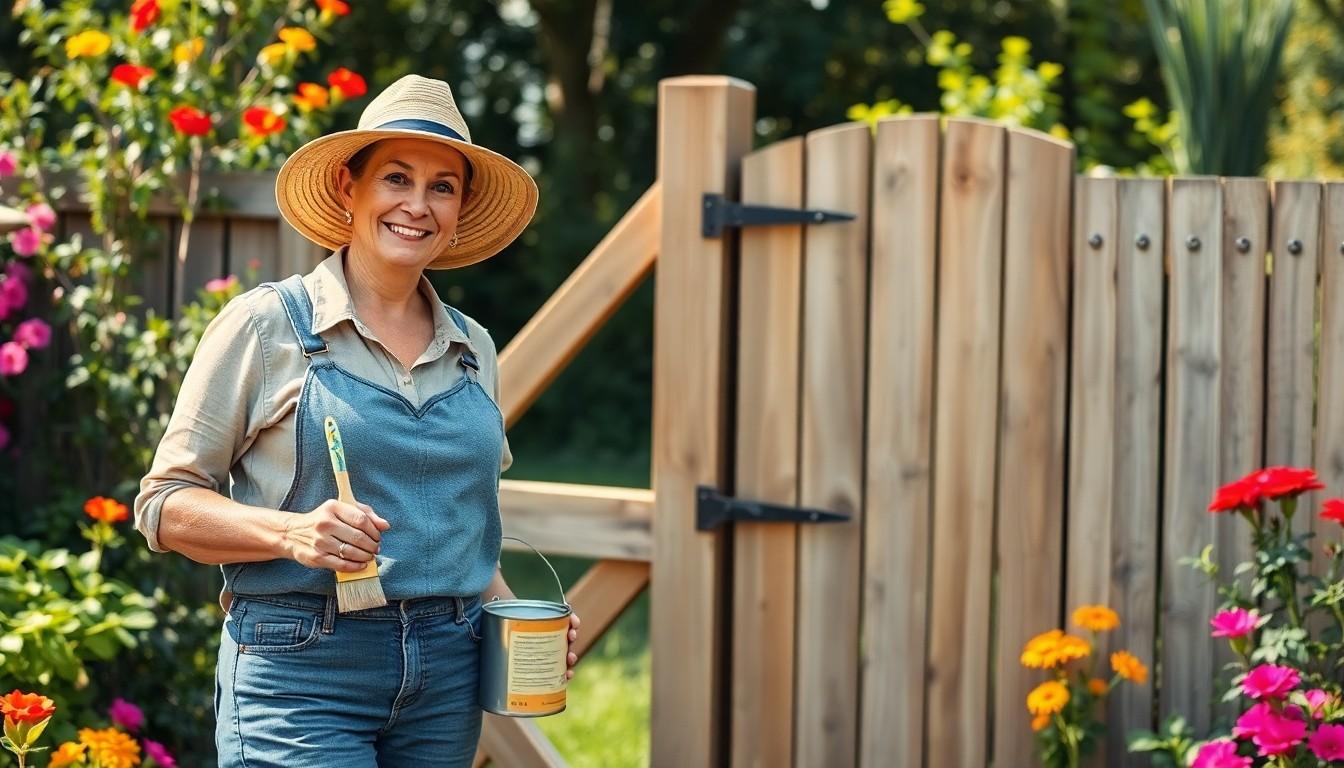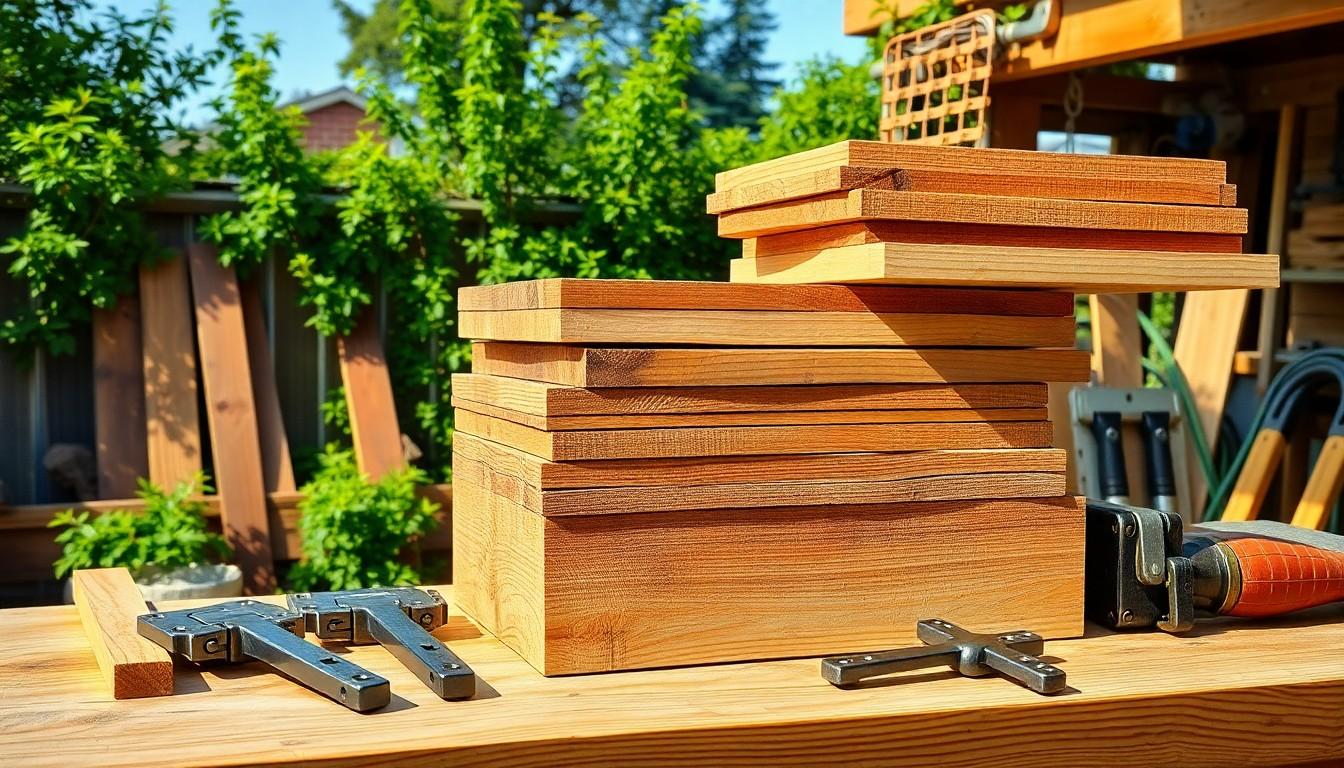The Best Fluffy Pancakes recipe you will fall in love with. Full of tips and tricks to help you make the best pancakes.

Diy Garden Gate: Create a Stunning Entryway That Transforms Your Outdoor Space
A garden gate isn’t just a barrier; it’s the entrance to your personal paradise. Imagine strolling through your yard, greeted by a charming gate that not only keeps the critters out but also adds a splash of personality to your landscape. Why settle for a store-bought option that screams “I’m just like everyone else” when you can craft a DIY masterpiece that reflects your unique style?
Overview Of DIY Garden Gates
Constructing a DIY garden gate offers numerous benefits. It allows for customization, ensuring the gate fits individual taste and landscape design. A well-designed gate enhances curb appeal and draws attention to the garden.
Materials for a DIY gate vary widely. Options include wood, vinyl, and metal, each providing distinct aesthetics and durability. Selecting the right material affects not only appearance but also maintenance and longevity.
Design plays a crucial role in the gate’s integration with the garden. Styles range from rustic and charming to modern and sleek. Combining elements like latticework or decorative hardware can elevate the overall look.
Dimensions also matter when building a gate. Standard widths sit between 36 and 48 inches. Height typically ranges from 48 to 72 inches. Considering these measurements ensures the gate serves its purpose effectively while allowing for ease of use.
Tools required for the project include a saw, drill, and level for precision. Gathering necessary tools beforehand streamlines the process, making it more efficient. Safety gear, like gloves and goggles, should also be on hand to prevent injuries during construction.
Assembling the gate necessitates careful planning. Following a clear design plan simplifies the build and enhances the outcome. DIY enthusiasts should verify measurements frequently to avoid mistakes.
Installing the gate might require additional hardware like hinges and latches. Opting for high-quality components guarantees longevity and functionality. Additionally, selecting the ideal location for installation complements the garden layout.
A DIY garden gate not only provides security but also enhances the overall charm of the outdoor space. Building one reflects personal style while creating a welcoming entrance. Each completed project contributes to a unique garden environment.
Materials Needed For A DIY Garden Gate

Selecting the right materials is crucial for crafting a sturdy and visually appealing DIY garden gate. Below are essential components to consider.
Wood Options
Cedar and redwood provide natural resistance to rot, making them popular choices. Both options add rustic charm to any garden. Pine offers a more budget-friendly alternative, though it requires treatments to enhance longevity. Pressure-treated lumber also stands as a viable option, providing durability for outdoor use. Consider the aesthetics of the wood grain and color when making a choice. Ensure dimensions align with the desired gate size; typical thickness ranges from 1 to 2 inches. Selecting the right wood contributes to the overall style and longevity of the gate.
Hardware Essentials
Quality hardware secures the integrity of the gate. Hinges must support the weight of the wood, so choose heavy-duty options for added stability. Latches are critical for ease of use; opt for designs that blend functionality with aesthetics. Additionally, gate locks enhance security, especially for garden perimeters. Screws and brackets should match the materials used for a cohesive look. Include a level to ensure the gate hangs straight, preventing sagging. Investing in quality hardware ensures not only durability but also ease of operation.
Step-By-Step Guide To Building A DIY Garden Gate
Building a DIY garden gate involves careful planning and precise execution. The following steps detail the essential tasks for a successful project.
Measuring And Planning
Accurate measurements commence the gate-building process. Heights typically range from 48 to 72 inches, while widths fall between 36 to 48 inches. For optimal results, sketch a design that reflects personal style and complements the landscape. Mark the gate’s position using stakes and string for a clear layout. Consider local regulations or property lines during planning. A well-thought-out design supports not only functionality but also aesthetic appeal.
Cutting And Assembling
Selecting appropriate materials is crucial at this stage. Common choices include cedar, redwood, or pressure-treated lumber for durability. Use a saw to cut the wood according to the predetermined measurements, ensuring clean edges. After cutting, assemble the frame using screws for added strength. Employ a level to guarantee the frame is square and even. This attention to detail enhances both stability and appearance. Finally, attach the slats or panels to complete the gate structure.
Finishing Touches For Your DIY Garden Gate
Finishing touches elevate the look and functionality of a DIY garden gate. Focus on the details to create a visually appealing and practical entry point.
Painting Or Staining
Choosing the right paint or stain enhances both appearance and protection. Traditional colors like forest green or barn red complement natural surroundings. Consider using exterior-grade paint to resist weathering and fading. Opting for a semi-transparent stain allows the wood’s grain to show through while providing a layer of protection. Applying a primer before the final coat improves adhesion and durability. Regular maintenance, such as yearly touch-ups, preserves the gate’s beauty.
Adding Decorative Elements
Incorporating decorative elements adds personality to a garden gate. Select hinges in decorative shapes or finishes that match the overall design. Consider adding a handcrafted sign with the home’s name for a personal touch. Decorative metalwork or wooden accents can enhance the gate’s visual appeal. Planter boxes or hanging pots nearby introduce greenery and charm. Install a whimsical handle or latch to create a unique focal point. These finishing elements improve aesthetics while reflecting individual style.
Tips For Maintaining Your DIY Garden Gate
Regular maintenance ensures the longevity of your DIY garden gate. Check the hinges often. Tighten any loose screws to prevent sagging or misalignment. Inspect the latch mechanism as well, adjusting to guarantee a secure closure.
Cleaning removes dirt and debris that can cause wear. Use mild soap and water, and a soft cloth to wipe down the gate monthly. Stains or paint chips require attention too. Reapply protective coatings as needed to prevent wood rot and metal corrosion.
Sealing or painting safeguards material against weather conditions. Opt for exterior-grade paint or quality wood sealants for optimal protection. Pay attention to reapplying paint every few years. Inspect for any signs of fading or peeling that may compromise the gate’s appearance and protection.
Check for insect infestations frequently. Termites, in particular, can damage wooden gates. If any critters are detected, consider calling pest control to address the issue promptly.
Consider seasonal adjustments. Winter may require specific weatherproofing techniques, while summer calls for thorough cleaning. Adapting maintenance routines to seasonal changes keeps the gate functioning smoothly.
Finally, monitor the gate’s alignment. If it sticks or drags, consider readjusting the frame or hinges. Consistent surveillance of these factors contributes to the gate’s functionality and aesthetic appeal, ensuring it stands as a beautiful feature in the garden.
Conclusion
Creating a DIY garden gate is a rewarding project that brings personal style and charm to any outdoor space. By selecting the right materials and incorporating unique design elements, individuals can craft a gate that not only enhances curb appeal but also provides security.
Regular maintenance ensures the gate remains functional and visually appealing over time. With careful planning and attention to detail, a DIY garden gate can transform a garden into a private paradise. Embracing this project allows for creativity while adding a beautiful focal point to the landscape.




